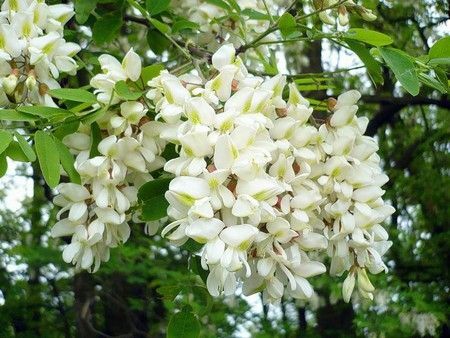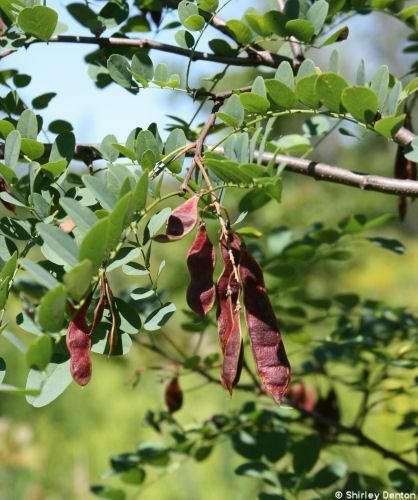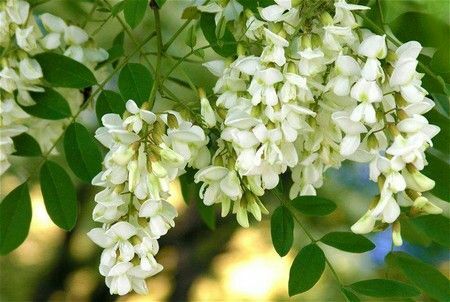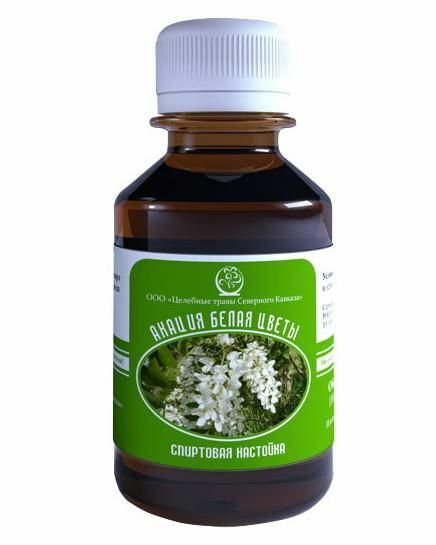- What is this plant?
- Medical properties of "white acacia"
- Application of "white acacia" as a medicine
- Warnings and contraindications
Imagine, a tree that from childhood we are accustomed to perceive as a white acacia, biologists do not consider acacia! Few people know that the real name of this tree( in botany) is robinium vulgaris , or robinia, pseudo-acacia .

The name robinia was invented by Karl Linnaeus and given to a plant in honor of the French botanists Jean and Vespasian Roben. However, the erroneous naming of the white acacia is so widespread that it eclipsed the authentic! We will not deviate from the cultural tradition, so that the reader will understand us, we will use the familiar name, but we will "take" it in quotes.

. What is this plant?
The native land of the "white acacia" is the North American forests, however it was successfully naturalized on all continents( of course, except Antarctica).Now it is spread on the territory of our country, in the Crimea, the Caucasus and the Far East.
Acacia for Indians is the tree of life, immortality;her beautiful flowers symbolize purity. Collected in large brushes, they please with their sweet aroma in June-July. Bees willingly gather nectar from them. According to scientists, from one adult tree you can get from 5 to 14 kg of fragrant honey, which practically does not crystallize.

"White acacia" grows rapidly, especially for the first 10 years, and under favorable conditions can reach heights of up to 30This tree is quite hardy, sun-loving, drought-resistant, has a beautiful openwork crown, so it is successfully used both in landscape design, and to create windbreak forest belts, strengthening unsteady soils with high sand content. The oldest tree in Paris is the "white acacia", planted in 1601 in the royal garden of Henry VI.It's hard to believe, but robinia is used in the subtle art of growing bonsai - mini-copies of real trees.
If you look at the photo, you will never guess that the "white acacia" belongs to the family of beans. It "gives out" flowers and fruits - small pods with seeds, which, however, in food and for treatment are not used, but are used in ornamental crafts.

The healing qualities of the "white acacia"
It is known that robinia preparations can be used as antispasmodics, diuretics, mild laxative, as well as antipyretic, astringent, hemostatic, choleretic and expectorant. It is known that the "white acacia" is used in the treatment of many diseases:
- tumors and inflammations in the "female" sexual sphere;infertility;
- rheumatism, joint diseases;
- depression, overwork;
- ulcerative formations in the stomach;
- colds, including a protracted nature.
Specialists admit that the healing properties and chemical composition of the "white acacia" have not yet been fully studied, so the treatment with drugs from this plant is possible only under the supervision of a doctor or an experienced herbalist.
From the "white acacia" is a valuable essential oil, which has antispasmodic, analgesic, antiseptic, stimulating, action, and also repels insect pests. This oil is recommended for the treatment of sensitive facial skin, in aromatherapy to raise the mood and neutralize the effects of stress.
An interesting fact! Blossoming acacia is used for making jam and even vodka. You can learn more about this from the video at the end of the article.
Chemical Composition of Robinium
Flowers and a young bark of the "white acacia" contain a unique robinin - a substance that causes a decrease in the level of ammonia in the blood and removal of urea from the body. This substance is used in pharmacology for the manufacture of drugs. Nevertheless, this substance is toxic, therefore independent treatment by "white acacia" is unacceptable!
Glycosides, flavonoids, organic and fatty acids, essential oils, tannins, esters( eg, salicylic acid), pectins, phytosterol, mucus, sugars, vitamins A and C, minerals, tannins are found in flowers, shoots and leaves..
Application of "white acacia" as a medicine
Traditional medicine for medical purposes recommends the use of flowers, leaves, young bark of tree shoots. As a rule, recipes use dry raw materials.
Tip: Flowers are harvested during the flowering period, and it is important to choose the time when they will be half-blown. Dry them in the shade, in a ventilated room at a temperature of up to 50 ° C( for example, in the attic).Bark and leaves can be harvested from spring to late summer.
Recipe for decoction with "female" inflammations
It is required: 1 tbsp.flowers, 2 glasses of water.
Preparation: Pour the raw material with water, bring to a boil and hold on low heat for 2 more minutes. Strain, cool and dilute with water to get the original volume.
Take 1 tbsp.broth up to four times a day for half an hour before meals.
Recipe for setting acacia flowers for infertility
It will be required: fresh flowers, alcohol or vodka( in a ratio of 1: 1).
Preparation: Pour the flowers with alcohol, close the dishes and leave for 10 days in a dark place.
Take 3 times a day for 20 drops, diluted in 1 tbsp.clean water.

Tincture prescription for rheumatism, radiculitis
It will take: 50 g of flowers, 2 glasses of vodka or alcohol.
Preparation: Pour the raw material with vodka, insist for three weeks in a dark place, shaking dishes regularly. After the expiry of the period, tincture is filtered and applied for grinding - 2 times a day. Such a tool also helps with varicose veins, thrombophlebitis.

Recipe for decoction for cold, cough
It is required: 1 tbsp.powdered leaves, 1 cup boiling water.
Preparation: Pour the raw material with water, boil for 5 minutes on low heat. Cooled broth strain and take thrice a day 1 tbsp.before meals.
Recipe decoction for cystitis
It will be required: collection of the acacia flowers, calendula flowers, wild grass root( 50 g), water( 300 ml) taken in equal parts.
Preparation: Pour the raw material with water, boil for 8 minutes. Cool, strain and add hot water to 300 ml.
Take the decoction three times a day for 50 ml.
Prescription of bark for treatment of gastritis, peptic ulcer, constipation
It is required: 1 tsp.acacia bark, water( 1 liter).
Preparation: Pour the bark with boiling water and leave for 1 hour. Strain, take 120 ml three times a day for 20 minutes.before meals.
Cautions and contraindications
The bark of the tree, as well as the wood, contains the alkaloid toxalbuminrobin, which is irritating and "burns" the protective mucous membranes. Thus, when harvesting wood, signs of poisoning may appear: headache or heart pain, malaise, abdominal pain, nausea, vomiting, diarrhea. In case of manifestations of such symptoms, immediately rinse the stomach, drink the absorbent and consult a doctor.
Drugs of "white acacia" should be taken in limited doses, since a large dose can lead to poisoning with poisonous substances. Acacia-based preparations can not be used for those with reduced gastric acidity, low blood pressure, and also for children, pregnant and lactating women, with individual intolerance.
